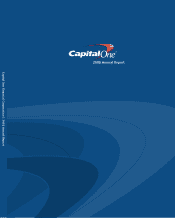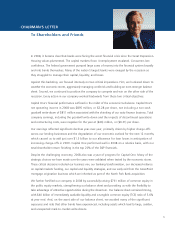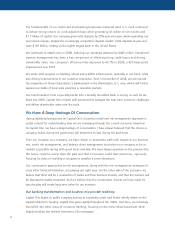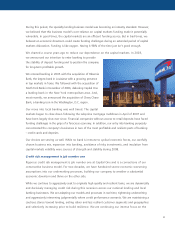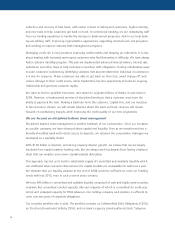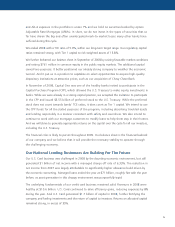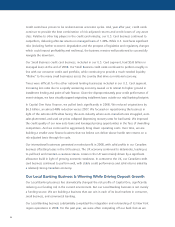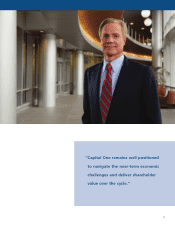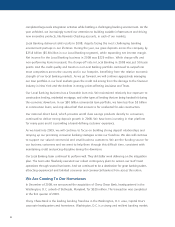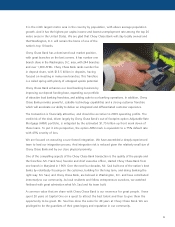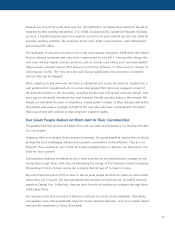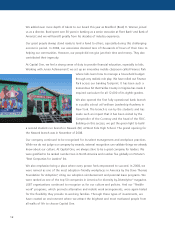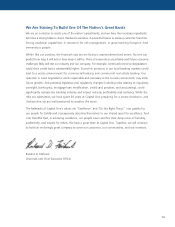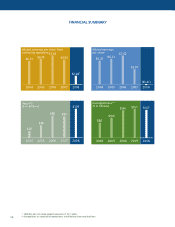Capital One 2008 Annual Report Download - page 6
Download and view the complete annual report
Please find page 6 of the 2008 Capital One annual report below. You can navigate through the pages in the report by either clicking on the pages listed below, or by using the keyword search tool below to find specific information within the annual report.
collection and recovery of bad loans, with earlier contact of delinquent customers, higher intensity,
and new tools to help customers get back on track. In commercial banking, we are redeploying staff
from our lending operations to handle the increase in bank-owned properties. And in our local bank,
we are adding staff, improving segmentation approaches, upgrading internal work-out programs,
and working to improve industry debt management programs.
Managing credit risk is not just about improving credit models and ramping up collections. It is also
about treating with humanity and respect customers who find themselves in difficulty. We have always
had a customer hardship program. This year we implemented enhanced interest waivers, interest rate
reductions, and other steps to help customers meet their debt obligations. Finding collaborative ways
to solve customers’ problems by identifying solutions that accommodate their individual circumstances
is a win for everyone. Many customers are able to get back on their feet, avoid charge-off, and
reduce damage to their credit scores, while Capital One has the opportunity to build an ongoing
relationship and generate customer loyalty.
We want to lend to qualified borrowers, and expect to originate billions of dollars in new loans in
2009. However, a fundamental premise of disciplined lending is that a customer must have the
ability to pay back the loan. Making a bad loan hurts the customer, Capital One, and our investors.
In this economic climate, we will remain selective about the loans we book. And we will remain
focused on maintaining margins while improving the credit quality of our new originations.
We are focused on disciplined balance sheet management
Disciplined balance sheet management is another hallmark of our conservatism. Since our inception
as a public company, we have obsessed about capital and liquidity. Even as we transformed into a
broadly diversified bank with robust access to deposits, we retained the conservative strategies we
developed as a specialty lender.
With $109 billion in deposits, and strong ongoing deposit growth, we believe that we are largely
insulated from capital markets funding risks. But we always work backwards from having a balance
sheet that can weather even severe capital markets dislocation.
This approach has led us to build a substantial supply of committed and available liquidity which
can withstand stress scenarios that assume the capital markets are unavailable for well over a year.
We estimate that our liquidity position at the end of 2008 would be sufficient to cover our funding
needs well into 2010, even in such a severe stress scenario.
We have $40 billion in committed and available liquidity comprised of cash and highly rated securities,
undrawn but committed conduit capacity (the vast majority of which is committed for multi-year
terms) and untapped capacity for FHLB advances. Our holding company cash position is sufficient to
cover over two years of corporate obligations.
Our securities portfolio also is solid. The portfolio contains no Collateralized Debt Obligations (CDOs),
no Structured Investment Vehicles (SIVs), and no bank or agency issued preferred stock. Subprime
4

